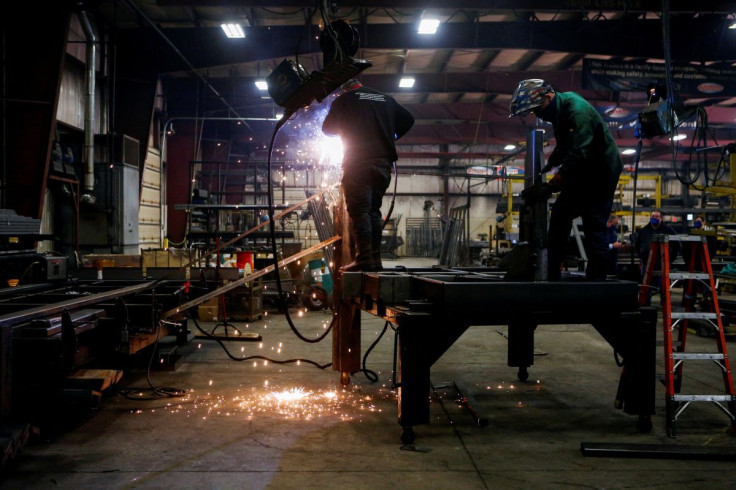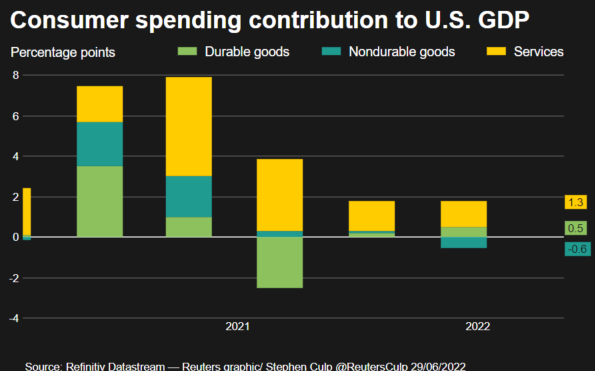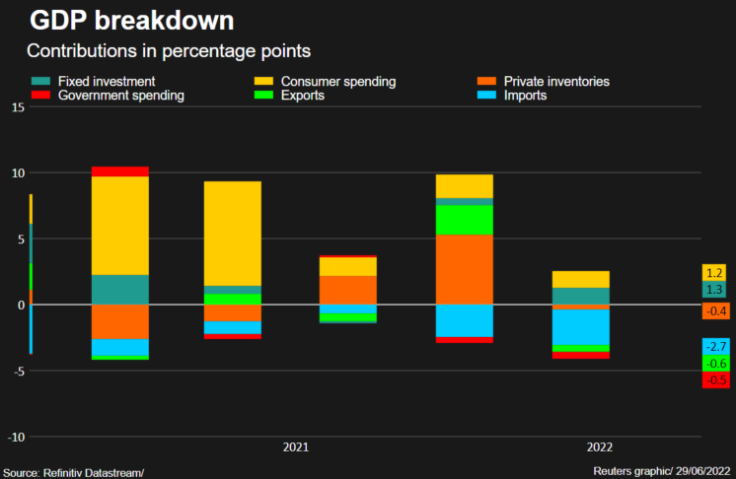U.S. Economy Contracts In First Quarter; Outlook Fuzzy

The U.S. economy contracted slightly more than previously estimated in the first quarter amid a record trade deficit and supply chain disruptions, government data showed on Wednesday.
The Commerce Department's third estimate of gross domestic product also showed some underlying softness in the economy, with consumer spending revised lower and inventories higher than reported last month. This does not bode well for domestic demand and the economic outlook amid recession jitters as the Federal Reserve aggressively tightens monetary policy to tame inflation.
"The biggest effect from this report is that it leaves inventories in a more overbuilt position than previously thought, putting second-quarter GDP into negative territory pending what tomorrow's data reveal about May consumption and consumer inflation and April revisions to the same," said Chris Low, chief economist at FHN Financial in New York.
Gross domestic product fell at a 1.6% annualized rate last quarter, revised down from the 1.5% pace of decline reported last month. Economists polled by Reuters had forecast the pace of contraction would be unrevised at a 1.5% rate.
The economy was initially estimated to have contracted at a 1.4% rate. It grew at a robust 6.9% pace in the fourth quarter. GDP was 2.7% above its level in the fourth quarter of 2019.
Consumer spending, which accounts for more than two-thirds of the economy, grew at a 1.8% rate instead of the 3.1% pace reported last month. The downgrade reflected downward revisions to financial services and insurance as well as health care.
Spending on long-lasting goods like motor vehicles and recreational goods was revised lower.
GDP consumer spending

Businesses accumulated inventories at a $188.5 billion rate, rather than the $149.6 billon rate reported last month. As a result, growth in final sales to private domestic purchasers, which excludes trade, inventories and government spending, was revised down to a 3.0% rate last quarter. This measure of domestic demand was previously reported to have risen at a 3.9% rate.
GDP contributors

The economy appears to have rebounded from the first-quarter slump, with consumer spending accelerating in April. Business spending on equipment remained solid through May, while the goods trade deficit narrowed significantly as exports hit a record high. But the bounce is losing momentum because of the Fed's aggressive posture.
The U.S. central bank this month raised its policy rate by three-quarters of a percentage point, its biggest hike since 1994. The Fed has increased its benchmark overnight interest rate by 150 basis points since March.
Retail sales fell in May, while housing starts and building permits declined. Consumer confidence hit a 16-month low in June. May's consumer spending report on Thursday could shed more light on second-quarter growth prospects, which range from as low as a 0.3% rate to as high as a 2.9% pace.
"It is extremely unlikely the economy is in recession now, however, despite the decline in first-quarter GDP and apparent weakness in output growth in the current quarter," said Scott Hoyt, a senior economist at Moody's Analytics in West Chester, Pennsylvania. "Job growth remains strong, investment is growing, both households and business have strong balance sheets."
© Copyright Thomson Reuters 2024. All rights reserved.




















